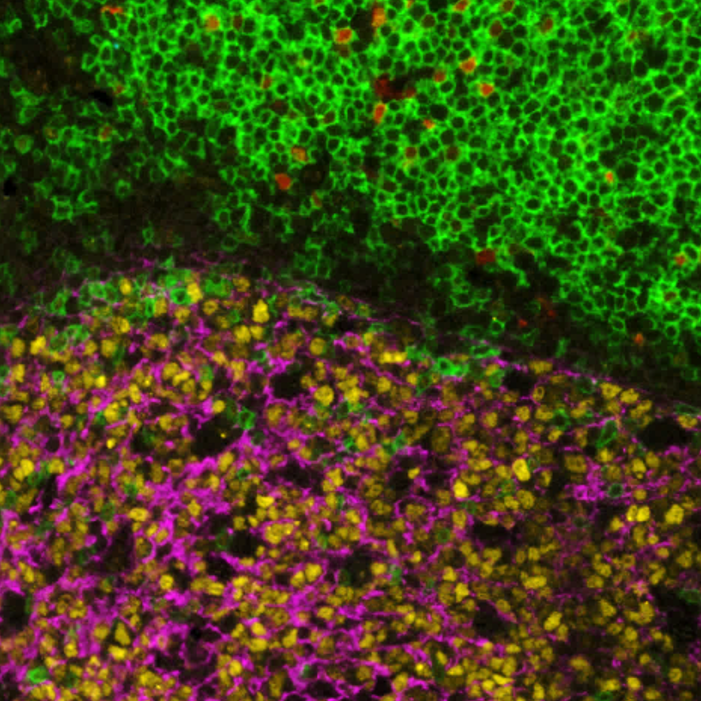news
Lunaphore announces new installation of the COMET™ platform at Heidelberg University Hospital for cardiovascular disease research applications
Date

LAUSANNE, Switzerland – September 8, 2022 – 5:00 pm (CEST) – Lunaphore, a Swiss life sciences company developing technology to enable spatial biology in every laboratory, today announced the installation of their COMET™ platform at Heidelberg University Hospital, Institute for Computational Biomedicine, Heidelberg, Germany. Researchers will integrate COMET™ in their spatial omics workflow with an initial focus on inflammation-induced changes in the heart and the immune system’s involvement in myocardial infarction (MI). The novel insights into the development of heart failure may aid in advancing treatment strategies. The COMET™ platform and the associated projects will be led by Dr. Denis Schapiro, Group Leader, and Dr. Florian Wünnemann, Postdoc at the Schapiro Lab, Heidelberg University Hospital.
“The installation at Heidelberg University further confirms the key role of spatial biology in understanding the underlying pathophysiological mechanisms across various types of diseases”, said Ata Tuna Ciftlik, Ph.D., Chief Executive Officer of Lunaphore. “Together, COMET™ can provide a more comprehensive study of the inflammatory processes in the heart, contributing to the development of novel treatment approaches to combat cardiovascular disease.”
Myocardial infarction (MI), the blockage of blood flow to the heart muscle, is one of the most frequent manifestations of cardiovascular disease worldwide and accounts for about 20% of all deaths only in Europe.1 The general immune cell types and signals implicated in response to MI have been extensively studied. However, information on when and where immune cells spread into the infarcted zone and how they interact with the tissue is less understood. Combining spatial transcriptomics with Lunaphore’s spatial multiplexed imaging will help define the inflammatory process in the heart and the role of the immune system in the functional changes that accompany and follow MI. The analysis of the cellular immune landscape and its infiltration routes can reveal crucial biological insights and ultimately improve treatment.
“The opportunity to use off-the-shelf antibodies with the COMET™ platform enables us to efficiently design various panels and cater the platform to several collaborators across diverse disease and tissue types simultaneously”, said Dr. Denis Schapiro, Group Leader at the Schapiro Lab, Heidelberg University Hospital.
COMET™ will support the development of hyperplex immunofluorescence assays in different projects, maximizing automation and staining quality while minimizing sample processing time. The COMET™ platform is a fully automated sequential multiplex instrument that performs high-throughput hyperplex spatial biology analysis on tissue samples using standard, non-conjugated antibodies. With high-reproducible tissue profiling capabilities, the system enables simultaneous analysis of 40 different spatial markers per tissue slide without user intervention. The unique and flexible capabilities of COMET™ enable the research team to harness and unlock the full potential of spatial biology for their discovery in various settings.
To learn more about the COMET™, please visit: https://lunaphore.com/products/comet/
To learn more about Lunaphore, please visit: https://lunaphore.com/
About Lunaphore
Lunaphore Technologies S.A. is a Swiss company born in 2014 with the vision of enabling spatial biology in every laboratory. Lunaphore has developed a game-changing chip technology that can extract spatial proteomic and genomic data from tumors and transform any simple assay into multiplex spatial biology without complexity. Lunaphore empowers researchers to push the boundaries of research to ultimately develop the next generation personalized therapies. For further information on Lunaphore and its products, please visit www.lunaphore.com.
About COMET™
COMET™ is a fully automated, sequential immunofluorescence (seqIF™) instrument, able to perform hyperplex staining and imaging, producing high-quality data in a robust and reproducible manner. With superior tissue profiling capabilities, the system allows multiplex analysis of up to 40 different spatial markers per tissue slide without human intervention. COMET™ has a wide range of research applications, allowing for a dramatic improvement in the understanding of disease pathology in areas such as immuno-oncology, neuroscience, and infectious diseases. To learn more about the COMET™ platform, please visit: https://lunaphore.com/products/comet/
For further information contact:
Irene Tamayo
Lunaphore Corporate Communications
Email: [email protected]
Reference:
- Wilkins E, et al. European Cardiovascular Disease Statistics 2017. Brussels: European Heart Network; 2017.